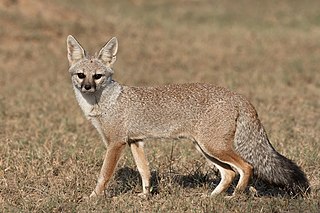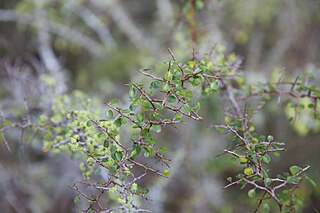
Jujube, sometimes jujuba, known by the scientific name Ziziphus jujuba and also called red date, Chinese date, and Chinese jujube, is a species in the genus Ziziphus in the buckthorn family Rhamnaceae. It is often confused with the closely related Indian Jujube, Z. mauritiana. The Chinese jujube enjoys a diverse range of climates from temperate to tropical, whereas the Indian jujube is restricted to warmer subtropical and tropical climates.

Ziziphus is a genus of about 40 species of spiny shrubs and small trees in the buckthorn family, Rhamnaceae, distributed in the warm-temperate, subtropical and tropical regions of the world. The leaves are alternate, entire, with three prominent basal veins, and 2–7 cm (0.79–2.76 in) long; some species are deciduous, others evergreen. The flowers are small, inconspicuous yellow-green. The fruit is an edible drupe, yellow-brown, red, or black, globose or oblong, 1–5 cm (0.39–1.97 in) long, often very sweet and sugary, reminiscent of a date in texture and flavour.

The Bengal fox, also known as the Indian fox, is a fox endemic to the Indian subcontinent from the Himalayan foothills and Terai of Nepal through southern India, and from southern and eastern Pakistan to eastern India and southeastern Bangladesh.

Ziziphus mauritiana, also known as Indian jujube, Indian plum, Chinese date, Chinese apple, ber and dunks is a tropical fruit tree species belonging to the family Rhamnaceae. It is often confused with the closely related Chinese jujube, but whereas Z. jujuba prefers temperate climates, Z. mauritiana is tropical to subtropical.

Ziziphus celata, commonly known as the Florida jujube or Florida ziziphus, is a terrestrial flowering plant endemic to central Florida.

Grevillea curviloba is a species of flowering plant in the family Proteaceae and is endemic to the south-west of Western Australia. It is a prostrate to erect shrub with short branchlets, divided leaves with linear to narrowly lance-shaped lobes with the narrower end towards the base, and white to cream-coloured flowers.

The fire-tailed sunbird is a species of sunbird in the family Nectariniidae.

The green-tailed sunbird or Nepal yellow-backed sunbird is a species of bird in the family Nectariniidae.

The rufous-vented tit is an Asian songbird species in the tit and chickadee family (Paridae). Some of its subspecies were formerly assigned to its western relative the rufous-naped tit, or these two were considered entirely conspecific.

The Kashmir nuthatch is a species of bird in the family Sittidae. It is found in the northernmost regions of the Indian subcontinent, primarily in the mid-altitudes of the Himalayas. The species ranges across Afghanistan, India, Nepal and Pakistan. The global population size has not been quantified, but the species is described as common in eastern Afghanistan and north-western India, and fairly common in Nepal.
Ziziphus hutchinsonii is a species of tree in the family Rhamnaceae. It is endemic to the Philippines.
Ziziphus robertsoniana is a species of plant in the family Rhamnaceae. It is found primarily in Kwale, on the southern coast of Kenya, and may also be found in Tanzania. It is threatened by habitat loss.
Ziziphus talanae, the balakat, aligamen, or talanai, is a species of tree in the family Rhamnaceae.

Ziziphus oenopolia, commonly known as the jackal jujube, small-fruited jujube or wild jujube, is a flowering plant with a broad distribution through tropical and subtropical Asia and Australasia. In India, it is mostly found in the deciduous forests of the southern part of the country.

Syzygium nervosum is a species of tree native to tropical Asia and Australia, extending as far north as Guangdong and Guangxi in China and as far south as the Northern Territory of Australia. It was previously known as Cleistocalyx operculatus and also known as C. nervosum(DC.) Kosterm., and Eugenia operculataRoxb., 1832. It is a medium-sized tree of about 10 meters in height with pale brown bark and dull green leaves.
Ziziphus budhensis is a species of plant in the family Rhamnaceae, endemic to the Temal region of Bagmati Province, Nepal.
Grevillea incurva is a species of flowering plant in the family Proteaceae and is endemic to inland south-western Western Australia. It is an erect shrub with linear adult leaves and clusters of creamy-yellow flowers.
Comibaena cassidara is a moth of the family Geometridae first described by Achille Guenée in 1857. It is found in Sri Lanka, India, Nepal, Pakistan, China, Thailand, Philippines, Malaysia, Singapore and Borneo.
Petelia medardaria is a moth of the family Geometridae first described by Gottlieb August Wilhelm Herrich-Schäffer in 1856. It is found in the Indian subregion, Sri Lanka, Malaysia, Borneo, Queensland and the Bismarck Islands.
The Himalayan long-eared bat, also known as Hodgson's long-eared bat, is a species of bat in the family Vespertilionidae. It is ranges from the Indian subcontinent east to China and south to Vietnam.













